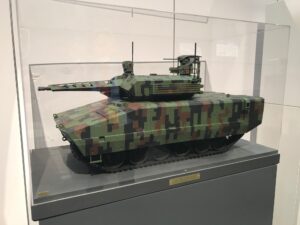
Rheinmetall’s offering for the Army’s Optionally Manned Fighting Vehicle (OMFV) includes a new remote turret designed specifically for the program, with the company citing the overall vehicle concept’s modularity as a key component for the Bradley replacement program. Mike Milner, American Rheinmetall Vehicles’ (ARV) director of business development and strategy, told Defense Daily last week the Army will deliver a refined set of parameters for OMFV following initial concept reviews last month, which the company will then take to further…

 By
By 











